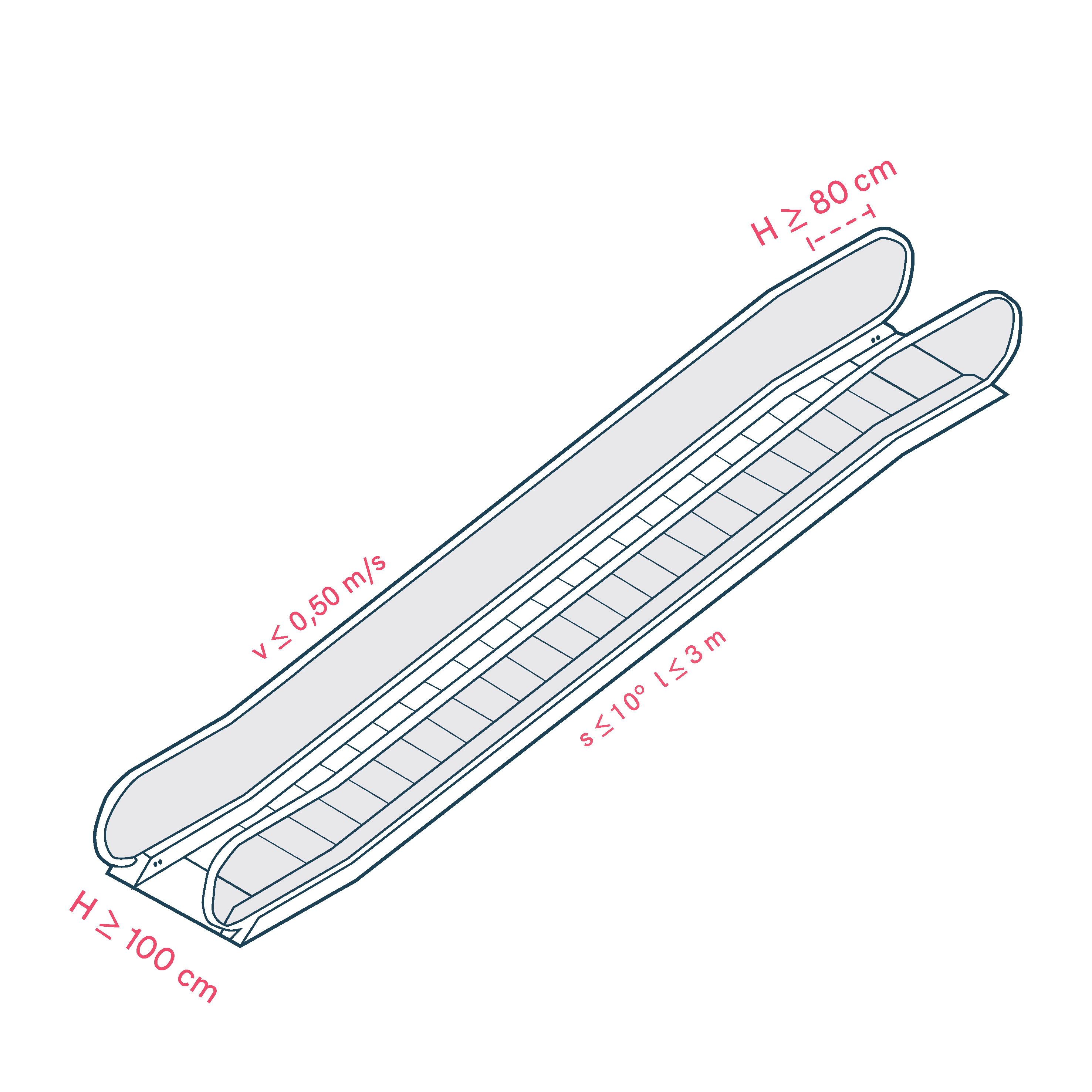Moving walkways and escalators are not considered part of accessible pedestrian pathways but are complementary elements to them. To ensure their usability for as many people as possible, those serving as alternatives to accessible pedestrian pathways and located nearby must meet the following specifications.

- The minimum free width should be 1.00 m.
- The maximum slope should not exceed 12%.
- The maximum speed should be 0.50 m/s.
- The moving surface should be horizontal for at least 80 cm before forming the steps in an escalator or before creating the inclined surface in a moving walkway.
- The edges of the steps should be marked with a contrasting band.
- The lighting levels should meet the same standards as those for accessible pedestrian pathways. In some cases, additional lighting may be necessary to ensure visibility.
- Handrails must contrast visually with the surroundings and extend horizontally for at least 80 cm before and after the moving surface. The pavement area between the handrails should be horizontal and level with the moving surface.
- In addition to the above, moving walkways and escalators must adhere to applicable sectoral legislation regarding safety and maintenance.
Sources
- https://cdn.mitma.gob.es/portal-web-drupal/estudios_y_publicaciones/guia_accesibilidad.pdf
- https://www.une.org/encuentra-tu-norma/busca-tu-norma/norma?c=N0007851
- https://www.une.org/encuentra-tu-norma/busca-tu-norma/norma?c=N0066564
- https://www.une.org/encuentra-tu-norma/busca-tu-norma/norma?c=N0050139
- Carers
- Children
- Cognitive abilities
- Decolonial perspective
- Enviroment
- Gender perspective
- Hearing impairment
- Low-education
- Older people
- Other(+)
- Physical abilities and features
- Sin categoría
- Temporary
- Universal Design
- Visual impairment